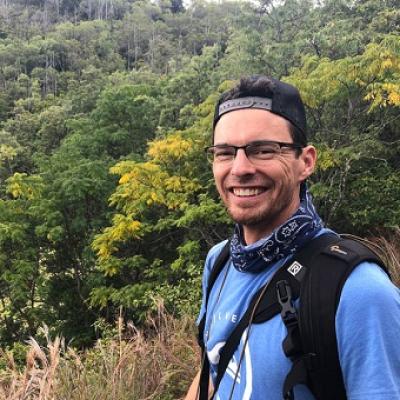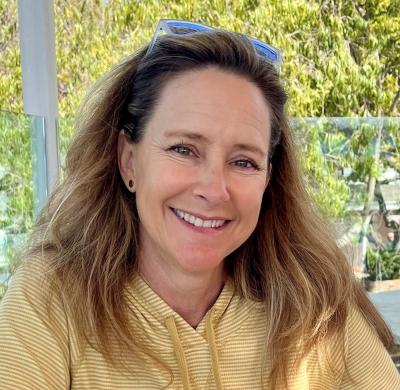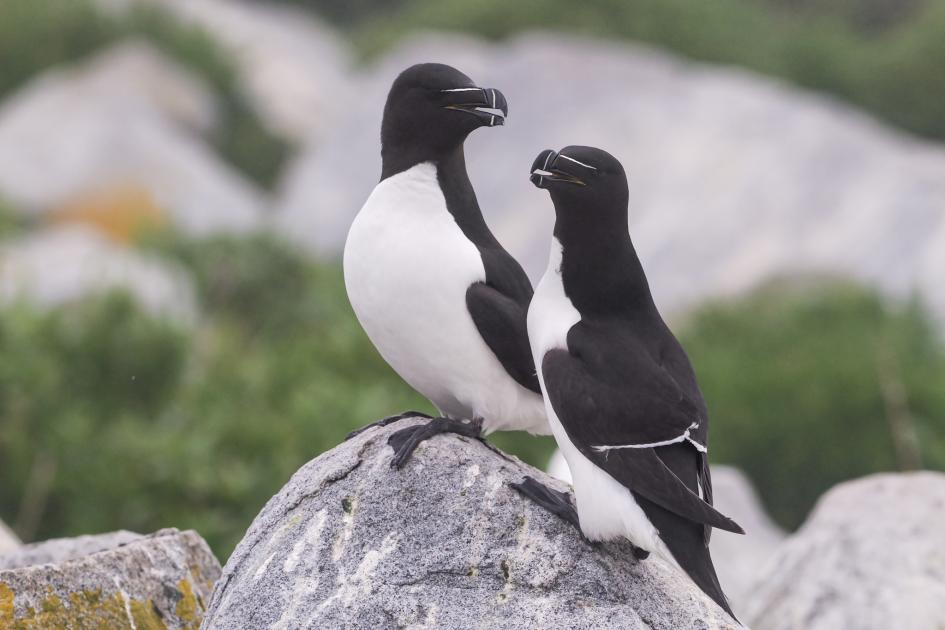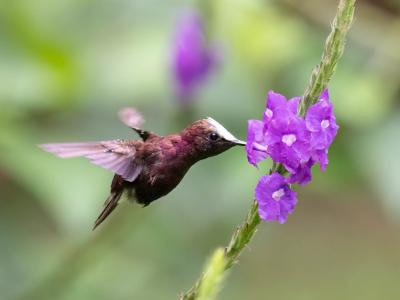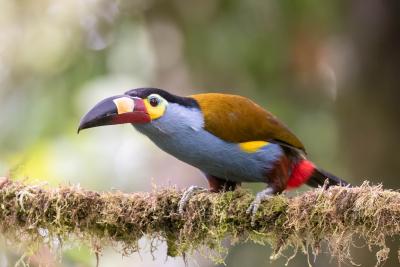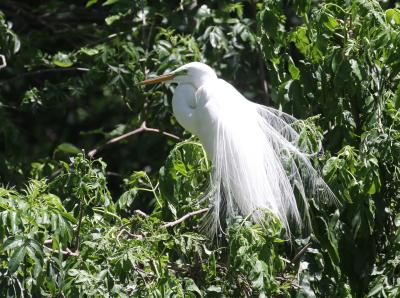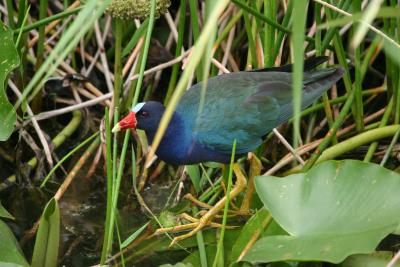Maine and New Hampshire
From Bicknell's Thrush to Atlantic Puffin
-
Jun 5-15, 2027
Scott Olmstead
This tour visits one of the most beautiful and sparsely populated areas in North America near the peak of breeding bird activity. Maine and New Hampshire are an avifaunal crossroads, as many species reach their northernmost or southernmost breeding ranges here. We’ll spend time with both of these groups, focusing on the boreal specialties that are mostly found farther north. This year, as a hedge against bad weather, we've added an extra day and an excellent new location in northern New Hampshire.
Off the coast, tiny rock islands teem with life as thousands of seabirds begin their nesting season. During our visit to Machias Seal Island, we’ll observe terns and alcids, including Razorbill and Atlantic Puffins up close and personal.
Throughout the trip we hope to see a great variety of warblers, sparrows, flycatchers, and thrushes And although the avian spectacle is reason enough to visit New England, the rugged coastline, picturesque lighthouses, quaint fishing towns, classic New England villages, tallest mountains in the Northeast, and excellent cuisine (the lobster doesn’t get any fresher than this!) are a significant part of the tour.
Day 1: The tour begins at 6:00 p.m. in South Portland. Night in South Portland.
Day 2: We’ll begin at Kennebunk Plains, the most significant remaining sand-plain grassland in New England and home to Grasshopper, Vesper, and FieldSparrows, as well as Prairie Warbler, Eastern Meadowlark, and Upland Sandpiper. After the plains we’ll visit Scarborough Marsh, the largest salt marsh north of Massachusetts and well known for its healthy population of both Nelson’s and Saltmarsh Sparrows (and their hybrids). In addition to studying the differences between the two “sharp-tailed” sparrows, we’ll search for other marsh and coastal species, including herons, “Eastern” Willet, Roseate and Least Terns, and Piping Plover, and for more southern Maine species like Fish Crow. We’ll build in some flexibility to look for any appealing migrants and/or rarities that might be on offer, and we'll most likely start our indulgence in Maine lobster at some point today as well. Night in South Portland.
Day 3: This morning we’ll start south of Portland in Wells, where the superb Wells Reserve at Laudholm Farm offers the chance to observe Bobolinks singing and cavorting above a lush meadow surrounded by tall hardwood forest that supports breeders like Veery, Great Crested Flycatcher, Ovenbird, Eastern Wood-Pewee, and Rose-breasted Grosbeak. We’ll also return to the coast for a walk along the shoreline at Biddeford Pool; in recent years this area has hosted a pair of Red-necked Grebes during the summer, and it’s a reliable place to spot a Great Cormorant or two. After lunch we’ll head north towards Bar Harbor with a stop on the way at Lake Messalonskee, home to a small breeding population of Black Tern, among other marsh denizens, and one of the few Purple Martin colonies in the state. We’ll look as well for Sandhill Crane at their only semi-reliable Maine location. Night in Bar Harbor.
Day 4: After savoring some famous blueberry pancakes, we’ll start with our first visit to Acadia National Park at the gardens and forested trails of Sieur de Monts. This can be a good spot to search for Barred Owl, Winter Wren, Alder Flycatcher, Pileated Woodpecker, and a host of other species. By mid-morning we’ll return to Bar Harbor to board a sizable catamaran for Petit Manan Island, part of the Maine Coastal Islands National Wildlife Refuge. As we approach the island, Atlantic Puffin, Razorbill, Common Murre, Black Guillemot, and Common Tern should be all around us. Before and after taking in the spectacle of the seabird colony, we’ll explore the nooks and crannies of Frenchman’s Bay, with Bald Eagle, Common Eider, and more Black Guillemots to keep us company.
After a delicious lunch at the iconic Jordan Pond House, famous for its spectacular setting, we’ll ascend to the summit of Cadillac Mountain with its marvelous views of the landscapes and surrounding waters of Mount Desert Island. Tonight we’ll dine at a restaurant that offers whole-lobster dinners for those who wish to give this traditional New England meal a try. Night in Bar Harbor.
Day 5: This morning we’ll take in the postcard-worthy scenery of Acadia along the well-known Park Loop Road, which could yield Peregrine Falcon, Broad-winged Hawk, and songbirds such as Blue-headed Vireo and Pine Warbler. We’ll continue “Downeast” before midday, probably with a stop in the town of Millbridge for lunch and a walk on the Hollingsworth Trail where we could get lucky with a Spruce Grouse encounter. If we missed Upland Sandpiper in the Kennebunk Plains, we will look for them in the blueberry barrens near Columbia Falls before continuing to Machias. Night in Machias
Day 6: They don’t call eastern coastal Maine the “Bold Coast” for nothing, and this marvelous region will provide some of the trip’s biggest prizes. We’ll meet our captain and crew in Cutler, Maine for a one-hour boat ride to legendary Machias Seal Island, 10 miles offshore. As we head out into the Gulf of Maine we’ll stay alert for Wilson’s Storm Petrel and perhaps a shearwater. If we’re fortunate and the sea conditions are calm enough, we’ll land and walk on raised pathways to blinds where we’ll find ourselves face to beak with Atlantic Puffin, Common Murre, and Razorbill. After an absence of several years, Arctic Tern appears to have recolonized the island as well. Even if we can’t land, our small boat will circle the island and get us excellent views of all the alcids, terns, seals and perhaps other marine creatures. It should be a day to remember!
The timing of our Machias Seal Island trip depends on weather and tide. If it’s a late departure, we may start with a quiet walk through a dense forest home to Spruce Grouse. If it’s an early departure, we’ll stage an afternoon exploration of West Quoddy Head State Park, the easternmost point in the United States and home to Palm Warbler, Lincoln’s Sparrow, and perhaps a lingering Great Cormorant. Night in Machias.
Day 7: We have flexibility this morning, and our options include a visit to Moosehorn National Wildlife Refuge in search of boreal warblers like Bay-breasted and Canada, and a scan of the extensive Lubec mudflats – the tide here is more than 15 feet – for lingering shorebirds and more Nelson’s Sparrows. By early afternoon we’ll commence the four-and-half hour drive west to Rangeley, with a stop for lunch to break up the journey. If there’s time, we’ll make a short birding stop in the afternoon. Our hotel is set beside a picturesque lake that is home to Common Loons and we may hear their evocative yodeling calls. Night in Rangeley.
Day 8: Our primary Rangeley destination is “Boy Scout Road,” a flat dirt track that passes through fine boreal and riparian habitat. We’ll look especially for Canada Jay and Yellow-bellied, Olive-sided, and Alder Flycatchers. The forest here is home to a variety of warblers, with Nashville, Magnolia, and Blackburnian among our targets. We’ll likely make several short stops, including a picnic lunch, as we continue west into New Hampshire; this stretch of road is our best chance to see a Moose, and we could encounter waterfowl such as Common Merganser or Ring-necked Duck along the scenic Magalloway and Androscoggin Rivers.
After an early dinner we’ll board our special after-hours charter up the Mount Washington Auto Road and into the realm of the localized and sought-after Bicknell’s Thrush. We should hear their ethereal song, and with luck we hope to get a glimpse as well. If both time and weather permit, we’ll visit the summit for breeding American Pipit and perhaps take in the sunset from the “windiest place on earth.” Night in Gorham, New Hampshire.
Day 9: Our primary location is Dixville Notch in far northern New Hampshire, where a small mountain road leading to a series of wind turbines provides access to boreal species like Mourning Warbler, Boreal Chickadee, Philadelphia Vireo, Golden-crowned Kinglet, and perhaps Black-backed Woodpecker. Bicknell’s Thrush also calls this area home, giving us another chance at this species if we missed it on Mount Washington. Night in Gorham.
Day 10: We have flexibility in the morning to visit various locations around White Mountain National Forest and search for species that have eluded us up to this point. Weather permitting, we’ll take another trip to the mountaintop habitat home of Bicknell’s Thrush and Blackpoll Warbler, this time via a sky tram with a short walk once at the summit. After a picnic lunch, we’ll return to Portland, stopping at Brownfield Bog where we might fill a few more gaps on our list with targets including Least Flycatcher, Yellow-throated Vireo, Virginia Rail, both cuckoos, and various other more southerly wetland and edge birds. Night in South Portland.
Day 11: The tour concludes this morning in South Portland.
Note: The information presented here is an abbreviated version of our formal General Information for this tour. Its purpose is solely to give readers a sense of what might be involved if they take this tour. Although we do our best to make sure taht what follows here is completely accurate, it should not be used as a replacement for the formal document which will be sent to all tour registrants, and whose contents supersedes any information contained here.
ENTERING THE UNITED STATES: Non-U.S. citizens will need a valid passport and may need a tourist visa. Consult your nearest U.S. Embassy or consulate for details. Canadian citizens should carry proof of citizenship in the form of a passport or birth certificate.
Note: All participants, will be required to present government issued photo I.D. when we board the craft for our boat trips.
PACE OF THE TOUR: We will walk a moderate amount during this tour, often several short excursions in one day, but always at a birding pace. All walks are of short to at most moderate (two hours) duration, with no major climbs. Some trails will be over uneven surfaces, (with exposed tree roots or rocks) but the longer walks are on level surfaces (usually dirt roads). Due to very early sunrise, departure times can sometimes be as early as 4:30 or 5:00 AM in order to capture peak bird activity. However, these will be balanced by a little afternoon down time whenever possible.
HEALTH: Birdwatching in New Hampshire and Maine poses no major health hazards.
Altitude: We will reach 6200 feet (briefly) if we make it to the top of Mount Washington.
Insects and Ticks: Black flies, mosquitoes and deerflies may be locally bothersome or even overwhelming at certain sites, depending on rainfall amounts, but they are not an issue at all of the locations we visit.
Insect repellents with a high concentration of DEET are generally thought of as the most effective against mosquitoes and flies. However, care must be taken to avoid getting the DEET repellent on optical equipment as DEET dissolves rubber and plastic and can damage coated lenses. In recent years Picaridin has become a popular alternative to DEET; it is non-greasy and does not dissolve synthetic materials. Most camping supply stores and outfitters also carry some natural repellents containing botanical ingredients, which can be reasonably effective, though they may need to be reapplied more frequently.
Ticks are common in New England, but can usually be avoided by walking in the center of trails when hiking, and avoiding brushing against vegetation. Wearing light-colored pants makes it easier to spot ticks, and tucking your pants into your socks can help prevent them from getting to your skin. Treating clothing and gear in advance with products containing 0.5% permethrin, a type of insecticide, can be very effective against ticks. Be sure to read the product directions.
Smoking: Smoking is prohibited in the vehicles or when the group is gathered for meals, checklists, etc. If you are sharing a room with a nonsmoker, please do not smoke in the room. If you smoke in the field, do so well away and downwind from the group. If any location where the group is gathered has a stricter policy than the WINGS policy, that stricter policy will prevail.
CLIMATE: The weather can vary from very warm (80’s) and humid to possibly cool, wet, and very windy at the top of Mount Washington. We could experience cold (40-50’s) and damp weather on boat trips off the Maine coast and just about everything in between. Rain is possible, especially in the White Mountains. Layered clothing and proper rain gear are essential to accommodate a variety of weather conditions.
ACCOMMODATIONS: We will be staying in comfortable, standard motels throughout the trip. Our hotels have reasonably good Wi-Fi connections. Mobile phone access is very good near our lodging locations but can be intermittent when in the field.
FOOD: We’ll dine in local restaurants where the food is generally American standard except in Maine where lobster and other seafoods are available. Expect several picnic breakfasts and lunches. A few of our favorite lobster restaurants have limited menus, but we will always have food in the cooler to accomodate needs.
Food Allergies / Requirements: We cannot guarantee that all food allergies can be accommodated at every destination. Participants with significant food allergies or special dietary requirements should bring appropriate foods with them for those times when their needs cannot be met. Announced meal times are always approximate depending on how the day unfolds. Participants who need to eat according to a fixed schedule should bring supplemental food. Please contact the WINGS office if you have any questions.
SEASICKNESS: If you are prone to motion sickness, we recommend bringing medication such as Dramamine or Bonine for our boat trips to Machias Seal Island and in Bar Harbor. Although the trips will cancel if the sea conditions are too rough, we are still likely to experience some light to moderate motion. Note that these medications should be taken before the departure to ensure effectiveness.
TRANSPORTATION: We will be traveling by 15-passenger window van or minivan, depending on the group size. When using 15-passenger window vans, we will take a maximum of seven passengers plus the leader/driver. Participants should be able to ride in any seat in tour vehicles.
PHOTOGRAPHY: This is a very scenic area with many photographic opportunities. Although there will be occasions when bird photography is possible (especially at Machias Seal Island), birdwatching tours are not normally the best means of pursuing these aims. If you are a serious photographer, please bear in mind that the primary goal of the tour is to observe birds; please do not allow your photographic desires to conflict with other participants’ birding activities. “Digiscoping” is perfectly compatible with the tour, though you must bring your own spotting scope; the leader’s scope will not be available for this purpose.
Maine & New Hampshire
2025 Narrative
(View the eBird trip report is here.)
In Brief:
Our 2025 Maine and New Hampshire tour was a wonderful survey of the many distinctive habitats and landscapes that New England has to offer, from the extensive tidal marshes around Portland to the stunted spruce-fir forests of the subalpine zone of the White Mountains. Despite a little sunburn at the beginning of the trip and some smoke haze from distant wildfires, the weather cooperated for much of the time, most importantly for our visit to the seabird colony of the legendary Machias Seal Island, which proved to be a highlight for everyone. Our group, hailing from California, Arizona, New Mexico, Texas, and Iowa, enjoyed each other’s company while getting to know the birds of the region. Favorite sightings of the trip included Razorbill, Atlantic Puffin, Arctic Tern, Saltmarsh Sparrow, Black-billed Cuckoo, Upland Sandpiper, Yellow-throated Vireo, and the great diversity of warblers. The birding was enhanced throughout by sampling a variety of Maine’s famous seafood dishes and blueberry-inspired desserts and breakfasts. (Note: Zero participants actually turned into giant blueberries during the course of this itinerary.)
In Detail:
Day 1: We kicked things off with an introductory meeting at the hotel and then headed to dinner, where everyone eagerly shared the birds they were most hopeful to see.
Day 2: Our day started with a picnic breakfast and birding at Kennebunk Plains, a unique open sandplain habitat that is maintained by low-intensity fires. Many of the species we saw on our walk here like Prairie Warbler, Field Sparrow, Grasshopper Sparrow, and Eastern Meadowlark would be found nowhere else on our itinerary. After departing Kennebunk Plains we headed toward the coast for a couple of birding stops in Scarborough Marsh, where we connected with our top target, the specialized Saltmarsh Sparrow. We also added a variety of other coastal and wetland birds, such as Glossy Ibis, “Eastern” Willet, Least Tern, and our first Common Eiders, lifers for some of the group. For lunch we headed to Dyer Point for lobster rolls and enjoyed eating on the coast under a deep blue sky. We watched a busy Brown Thrasher and spotted a few Great Black-backed Gulls, another lifer for the westerners in the group. After lunch we made another spot in the marsh to pick up the secretive Nelson’s Sparrow and then walked along the beach to the Pine Point jetty. Closeup views of a cute Piping Plover foraging at the surf’s edge were the top highlight.
Day 3: This morning, we visited the town of Wells south of Portland, starting with another picnic breakfast, this time overlooking the harbor. Nesting Ospreys, a group of Bonaparte’s Gulls, and a pair of vocal Fish Crows were seen in the harbor before we headed over to Laudholm Farm for a walk around the meadows and through the woods. Several Bobolinks singing and displaying above the meadow were a crowd favorite, and we picked up several other new species, like Great Crested Flycatcher, Marsh Wren, Willow Flycatcher, Eastern Bluebird, and a cooperative Ovenbird. After Laudholm, we visited Biddeford Pool, a narrow peninsula that helps to frame Saco Bay. The rocky shoreline here is a reliable place for a variety of seabirds, and although we struggled with visibility, we managed to spot a lone American Oystercatcher, a single Great Cormorant among the numerous Double-cresteds, and a pair of elegant Red-necked Grebes. After lunch from a local deli, we began the journey northeast toward Bar Harbor. A short stop in Belgrade on the way produced some local specialties: Black Tern, Sandhill Crane, and Purple Martin, all localized species in Maine.
Day 4: After breakfast at a local Bar Harbor diner, we made our first visit to Acadia National Park, where we walked through the gorgeous forest at Sieur de Monts. It was a relatively “peaceful” (i.e. not all that birdy) walk, but there were still birds to be seen, like Eastern Wood-Pewee, American Redstart, and a pair of Red-eyed Vireos that were working on building a nest. By mid-morning we returned to Bar Harbor to prepare for our first boat trip, the famous “puffins and lighthouses” cruise around Frenchman Bay and out to Petit Manan Island aboard the Coastal Explorer. The most exciting part of the voyage by far was our visit to the island, where hundreds of Atlantic Puffins and Common Terns were joined by a handful of Razorbills, Black Guillemots, and Common Murres all coming and going from their nesting colony. During the rest of the excursion, we admired the scenery of the bay, Schoodic Peninsula, and Mount Desert Island, while tallying several Bald Eagle and Common Loon sightings and spotting a number of Harbor Seals resting on Egg Rock. Once we returned to shore we headed to the iconic Jordan Pond House in the center of the national park for a late lunch, and then drove up to the summit of Cadillac Mountain, the highest point on the eastern seaboard of the US. It was a great way to appreciate the areas we had covered during our cruise, and there were a few birds up there as well, including our first Dark-eyed Junco of the trip. For dinner we visited a nearby seafood restaurant that provided the chance to try a traditional whole steamed lobster, a classic Maine meal.
Day 5: We continued our exploration of the national park via the scenic Park Loop Road, taking in the dramatic views from iconic points like Thunder Hole and Otter Cliffs. While absorbing the scenery we also enjoyed a noisy pair of Peregrine Falcons flying above and perching on the cliffs. Black Guillemots showed off their white wing patches and bright red feet as they approached the rocks by the water’s edge. A short visit to the ponds behind Mount Desert Island High School delivered some quality sightings like a bold Eastern Kingbird, handsome Pine and Black-throated Green Warblers, and at least four Broad-winged Hawks soaring overhead. By noon we were already heading further “downeast,” but there was more birding to be done en route to our destination, Machias. First, we took a walk through low, mixed conifer forest and dark, swampy cedar forest at the Hollingsworth Trail on Petit Manan Point, where we got nice views of a pair of Palm Warblers and spent a while watching a busy Hairy Woodpecker. Later in the afternoon we had the privilege of observing a trio of Upland Sandpipers foraging in the open blueberry barrens near Columbia Falls. We arrived in Machias in time to see the local Ospreys and feisty Bald Eagles quarreling over the estuary behind our hotel. After dinner, the most intrepid among us opted to take a dusk excursion to look for American Woodcock and Eastern Whip-poor-will. Light rain and clouds of mosquitoes made this a complicated endeavor; in the end we came away with a cool listening experience with a displaying woodcock.
Day 6: We started the day with a traditional New England breakfast at the local Dunkin’ in Machias and then set out with much anticipation toward Cutler Harbor where we met Captain Bob, lead naturalist Abby, and the rest of the crew of the Barbara Frost for our outing to Machias Seal Island. The weather was extremely foggy, and the voyage out to the island did not produce many birds, but the calm seas allowed us to execute the landing on the island with ease. Once on the island we walked up to the helipad amid nesting Arctic Terns and received our briefing on the island protocols. We were able to spend about an hour in viewing blinds set at the edge of the seabird colony, and it was a dream come true to observe numerous Razorbills and Atlantic Puffins arriving and departing from their nest burrows, canoodling with their mates, and just going about their daily lives right in front of us. The time passed quickly, and soon we were ferrying back to the Barbara Frost for the cruise back to Cutler. We spent the rest of the afternoon birding various points around Lubec and Quoddy Head, picking up Black and White-winged Scoters, as well as a flyover Pileated Woodpecker at our picnic lunch spot. Cliff Swallows were a new addition to our trip list south of Cutler. As we took photos at West Quoddy Head Lighthouse, the easternmost point in the continental USA, an Alder Flycatcher greeted us from the nearby marsh and our phones welcomed us to Canada. It soon started to rain, and we headed back to Machias.
Day 7: We began our second morning in the Machias-Lubec area with a visit to the Boot Head Preserve, where we walked slowly through dense, mossy forest with all our senses alert in search of the secretive Spruce Grouse. Unfortunately, our quest for the grouse was unsuccessful, but we did find a number of other species, like Blue-headed Vireo and Lincoln’s Sparrow. By mid-morning we headed a bit north to Moosehorn National Wildlife Refuge, and we were delighted to see a fancy male Bay-breasted Warbler decked out in his breeding finery. A Common Nighthawk surprised us by sailing overhead while giving its abrupt “beent” vocalization. And then time was up, and we set a course west toward Rangeley. However, while leaving the Machias area we followed up on a recent rarity report and it paid off in the form of a Western Cattle-Egret foraging on a lawn. After lunch we managed to fit in a short birding stop in Farmington, where we had one of our most unexpected moments of the tour, when a Black-billed Cuckoo began to vocalize spontaneously and then responded to playback by flying into a tree above our heads. An American Redstart working on her nest was another nice surprise. Once we had checked in to our accommodation in Rangeley we enjoyed a delicious dinner at the tavern and then those who went out for a walk by the lake behind the hotel were rewarded with the eerie yodeling calls on Common Loons.
Day 8: The main event this morning was a visit to Boy Scout Road west of Rangeley. Although it hasn’t been as productive for the boreal specialties in recent years, this is still a beautiful place to bird, with lush mixed forest set beside the Kennebago River. After our picnic breakfast and a “serenade” by a couple of fledgling Common Ravens, we walked toward the river where we spotted a lone Canada Jay perched in a treetop. We did well with warblers here, including Blackburnian, Nashville, and Magnolia. A Yellow-bellied Sapsucker was a new addition to our trip list. But perhaps the highlight of the morning was a very cooperative Winter Wren that sat up on top of a fallen tree and sang its heart out for us to appreciate. By late morning we continued our westward journey toward New Hampshire, with a few more stops along the way. After checking into our hotel and grabbing an early pizza dinner, we met our local guide Mark for an after-hours trip up the Mount Washington Auto Road toward the subalpine zone that is home to Bicknell’s Thrush. Mount Washington is famous for having the worst weather in the world, and as we reached the more exposed areas above 4,000’ we experienced just a taste of it, as we found ourselves inside a wind-blown, misty cloud that took away any hope of seeing any birds. Lower on the mountain we had better conditions for at least hearing the thrush but ultimately, they did not come into view; however, while we squinted and scanned in the forest understory we managed to spot a pair of Snowshoe Hares sporting their brown summer coats with smart white boots, a favorite mammal sighting of the trip.
Day 9: We started the morning by spotting a singing Philadelphia Vireo at Wildcat Mountain, undeterred by the light drizzle falling. On cue the sprinkles stopped long enough for a picnic breakfast, and then we departed Wildcat for our next stop, the Trudeau Loop Trail. Here we were fortunate to get nice views of a singing Yellow-bellied Flycatcher, a specialty of northern New England. By late morning we were ascending Cannon Mountain aboard the aerial tram, once again bound for the subalpine zone at the top of the mountain. And once again the weather made things difficult, and the mountain was completely shrouded in dense clouds at the top. Our best sighting in the windswept trees around the summit was a handsome male Blackpoll Warbler proclaiming his territory. An enthusiastic school field trip added another complication to our birding prospects, so we elected to return to the base of the mountain for our picnic lunch, and then we set off for Maine, first driving through the White Mountains National Forest along the beautiful and scenic Kancamagus Highway. Our final birding stop was at Brownfield Bog in Maine, where we braved abundant mosquitoes to tally several new birds for the trip, including Least Flycatcher, Veery, and the star of our visit: a cooperative Yellow-throated Vireo. A Virginia Rail that scampered across the trail in front of us was icing on the cake for this very birdy site. Upon returning to Portland we enjoyed a final dinner together, reminiscing about our favorite sightings of the trip (Razorbill and Atlantic Puffins were voted the top birds of the tour), and said our goodbyes. Hope to see you all another time!
- Scott Olmstead, 2025
Maximum group size seven with one leader.




































